
Klaipėda: Lithuania's Coastal Gem
Discover Klaipėda, Lithuania's coastal gem, where history, nature, and culture blend seamlessly along the stunning Baltic Sea coast.
Klaipėda is a charming port city on the Baltic Sea, boasting a rich history and a unique blend of German and Lithuanian cultures. As you stroll through its cobblestone streets, you'll encounter half-timbered buildings that date back to the 18th century, giving the city an old-world charm. The historic Old Town is a must-visit, with its quaint cafes, artisan shops, and lively squares. A visit to Klaipėda isn't complete without exploring the Curonian Spit, a UNESCO World Heritage site known for its stunning dunes, sandy beaches, and lush forests. The Spit offers a variety of outdoor activities, from hiking and cycling to bird watching and beachcombing. The Lithuanian Sea Museum and Dolphinarium, located on the northern tip of the Spit, is a favorite among families and sea life enthusiasts. Klaipėda also hosts a variety of cultural events and festivals throughout the year. The Sea Festival, held every summer, is a vibrant celebration featuring parades, concerts, and maritime exhibitions. For a taste of local cuisine, visit one of the city's traditional Lithuanian restaurants, where you can savor dishes like cepelinai (potato dumplings) and šaltibarščiai (cold beet soup). Klaipėda's mix of history, nature, and culture makes it a captivating destination for travelers.
Local tips in Klaipėda
- Visit the Curonian Spit early in the morning to avoid crowds and enjoy the tranquility of nature.
- Take a guided walking tour of the Old Town to learn about Klaipėda's unique history and architecture.
- Try local seafood dishes at the portside restaurants for an authentic Klaipėda dining experience.
- Attend the Sea Festival in summer to experience the city's vibrant maritime culture.
- Rent a bike to explore the city's extensive cycling paths and nearby natural attractions.
Klaipėda: Lithuania's Coastal Gem
Klaipėda is a charming port city on the Baltic Sea, boasting a rich history and a unique blend of German and Lithuanian cultures. As you stroll through its cobblestone streets, you'll encounter half-timbered buildings that date back to the 18th century, giving the city an old-world charm. The historic Old Town is a must-visit, with its quaint cafes, artisan shops, and lively squares. A visit to Klaipėda isn't complete without exploring the Curonian Spit, a UNESCO World Heritage site known for its stunning dunes, sandy beaches, and lush forests. The Spit offers a variety of outdoor activities, from hiking and cycling to bird watching and beachcombing. The Lithuanian Sea Museum and Dolphinarium, located on the northern tip of the Spit, is a favorite among families and sea life enthusiasts. Klaipėda also hosts a variety of cultural events and festivals throughout the year. The Sea Festival, held every summer, is a vibrant celebration featuring parades, concerts, and maritime exhibitions. For a taste of local cuisine, visit one of the city's traditional Lithuanian restaurants, where you can savor dishes like cepelinai (potato dumplings) and šaltibarščiai (cold beet soup). Klaipėda's mix of history, nature, and culture makes it a captivating destination for travelers.
When is the best time to go to Klaipėda?
Iconic landmarks you can’t miss
Lithuanian Sea Museum
Explore the Lithuanian Sea Museum in Klaipėda for an unforgettable journey through maritime history and marine conservation.
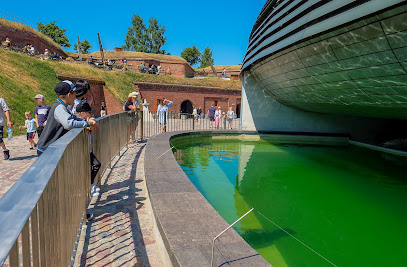
Old Ferry Terminal, North Horn
Experience the vibrant maritime life at the Old Ferry Terminal, North Horn – your gateway to Lithuania's stunning coastal treasures.
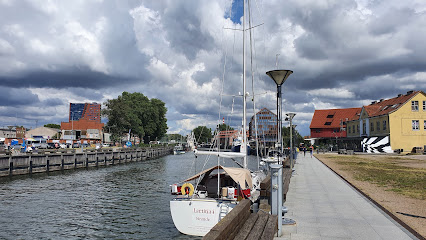
Theatre Square
Explore the vibrant Theatre Square in Klaipėda, a cultural hub filled with stunning architecture, lively events, and local charm.
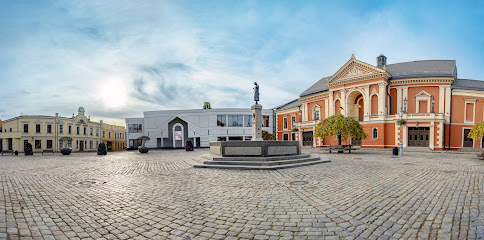
Melnrage Beach
Discover the serene beauty of Melnrage Beach in Klaipėda, a perfect destination for relaxation, water sports, and stunning sunset views along the Baltic Sea.

Klaipėda Sculpture Park
Explore Klaipėda Sculpture Park, a serene blend of art and nature filled with captivating sculptures and lush landscapes in Lithuania.
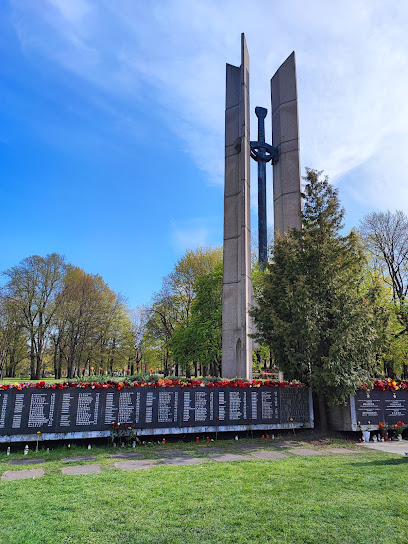
Biržos tiltas
Discover the beauty of Klaipėda at Biržos tiltas, a stunning bridge that connects nature and urban life, offering breathtaking views and rich history.
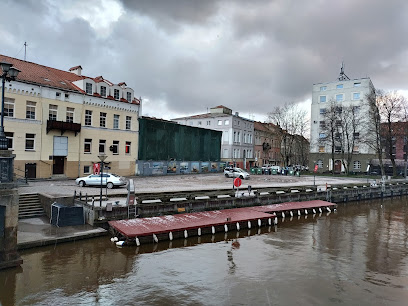
Klaipėda Castle
Discover the rich history and stunning architecture of Klaipėda Castle, a must-visit destination in Lithuania that blends culture and scenic beauty.
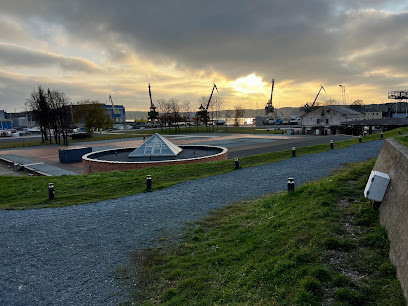
Battery Memel Nord - WWII bunker (Kukuliškių- Karklės baterija)
Discover the historical significance of Battery Memel Nord, a WWII bunker offering breathtaking views and captivating stories in Kukuliškiai.
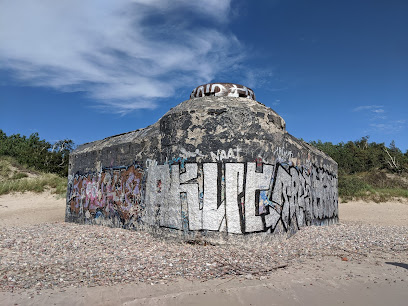
Museum of Clocks
Discover the fascinating history of timekeeping at Klaipėda's Museum of Clocks, a unique cultural gem showcasing intricate timepieces from around the world.
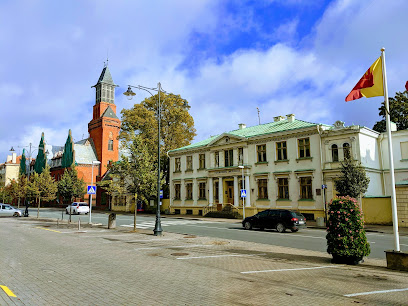
Jonas Hill
Explore the serene beauty of Jonas Hill in Klaipėda, a lush park perfect for relaxation, picnics, and enjoying nature's tranquility.

Klaipedos universitetas, Botanikos sodas
Discover the serene beauty of Klaipeda University Botanical Garden, a lush oasis of exotic plants and tranquil landscapes in Lithuania.
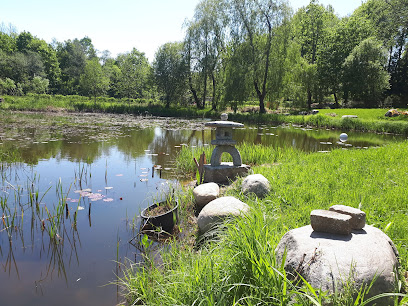
Sąjūdžio parkas
Experience the tranquility of Sąjūdžio Park in Klaipėda, a lush green haven perfect for relaxation, recreation, and enjoying Lithuania's natural beauty.

Smiltynės Beach
Experience the tranquil beauty of Smiltynė’s Beach in Klaipėda, where golden sands meet crystal-clear waters for a perfect seaside getaway.

The Castle Museum
Discover the captivating history of Klaipėda at The Castle Museum, a must-visit for every tourist exploring Lithuania's rich cultural heritage.
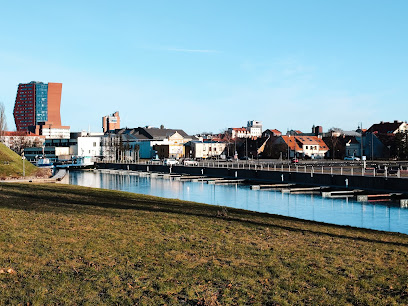
Black Ghost of Klaipėda
Experience the haunting beauty of the Black Ghost of Klaipėda, a striking sculpture steeped in maritime folklore and local history.
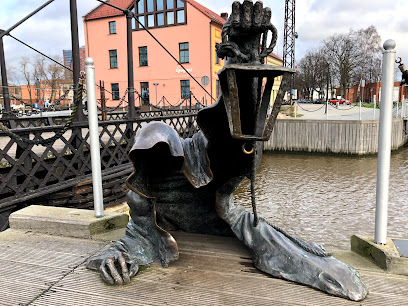
Unmissable attractions to see
Palangos gintaro muziejus
Explore the enchanting Palangos Gintaro Muziejus, where amber's history and beauty come alive in the heart of Palanga, Lithuania.
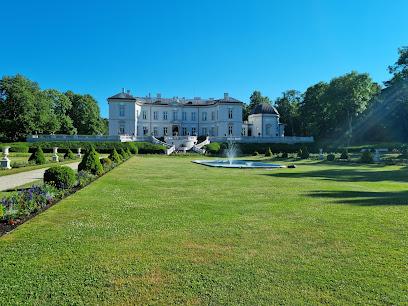
Theatre Square
Discover the rich cultural heritage and vibrant atmosphere of Theatre Square in Klaipėda, a must-visit destination for tourists seeking local charm.
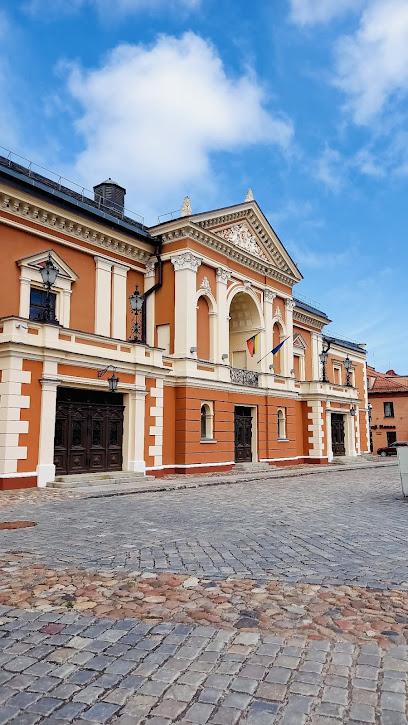
Hill of Witches
Discover the enchanting Hill of Witches in Juodkrantė, where Lithuanian folklore comes to life through captivating wooden sculptures surrounded by nature.
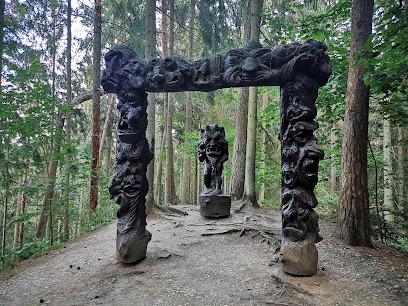
Palanga Pier
Discover the breathtaking views and vibrant atmosphere at Palanga Pier, the iconic landmark of Lithuania's stunning Baltic coastline.

Melnrages Molas
Explore Melnrages Molas, a stunning coastal gem in Klaipeda, where breathtaking views and serene landscapes await every traveler.
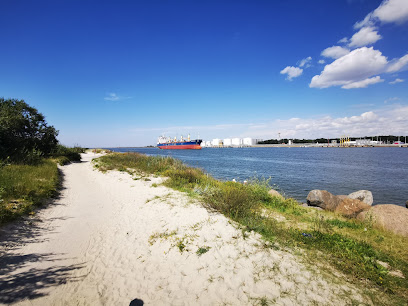
Birutė Hill
Discover the breathtaking views and serene beauty of Birutė Hill, a must-visit natural attraction in Palanga, Lithuania.
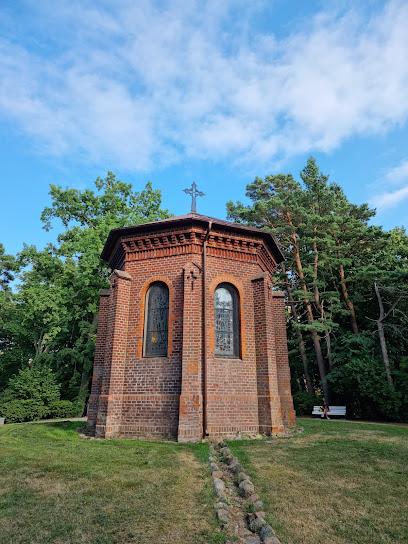
The Dead Dunes
Discover the breathtaking beauty of the Dead Dunes in Neringa, a unique landscape of rolling sand dunes and stunning coastal views.

Jūratė ir Kastytis
Explore the enchanting sculpture of Jūratė and Kastytis in Palanga, a romantic symbol of Lithuanian folklore set against the stunning Baltic Sea.
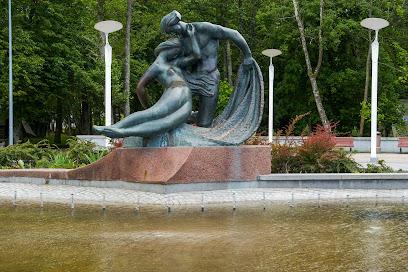
Minimelts park
Explore Minimelts Park in Klaipėda for a day of thrilling rides, delicious treats, and unforgettable family adventures.
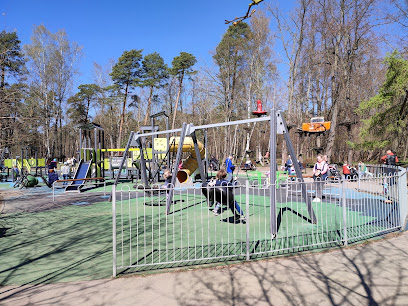
Sundial
Experience the captivating Sundial in Neringa Municipality, a stunning blend of art and nature that tracks time with the sun.
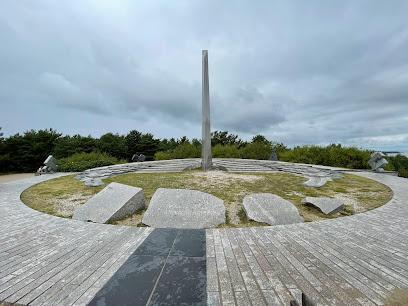
Church of the Assumption of Virgin Mary
Explore the architectural beauty and serene atmosphere of the Church of the Assumption of Virgin Mary in Palanga, a must-visit cultural landmark.
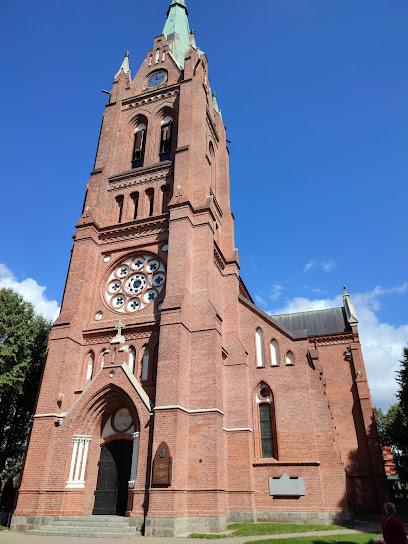
Klaipėda Drama Theatre
Discover the rich cultural tapestry of Klaipėda at the Klaipėda Drama Theatre, where captivating performances and local talent come to life.
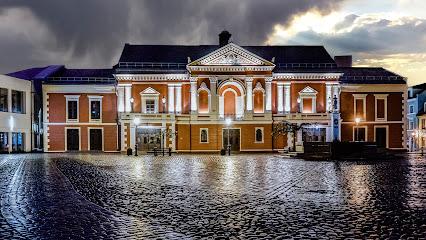
Biržos tiltas
Explore the beauty and history of Klaipėda at Biržos Tiltas, a stunning bridge offering picturesque views and a vibrant atmosphere.

Nida Marina
Explore the natural beauty and recreational offerings at Nida Marina, your gateway to the stunning landscapes of the Curonian Spit.
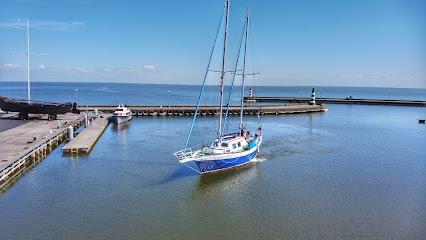
Cape of Ventė
Experience the breathtaking beauty of Cape of Ventė, a stunning natural landmark in Lithuania, perfect for nature lovers and birdwatchers.
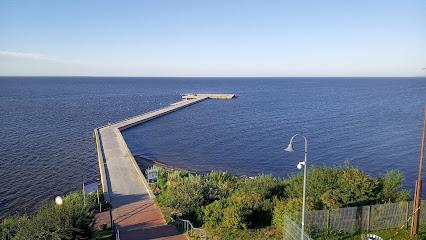
Essential places to dine
Pepper Grey
Experience the rich flavors of Lithuania at Pepper Grey – where culinary creativity meets local tradition in the heart of Klaipėda.
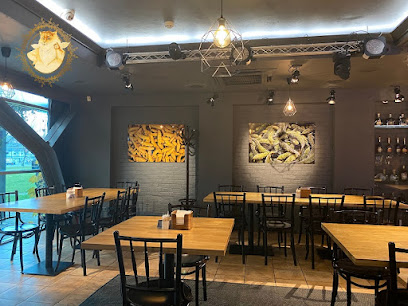
Švyturys Bhouse
Discover the essence of Lithuanian cuisine at Švyturys Bhouse – where tradition meets innovation in every bite.
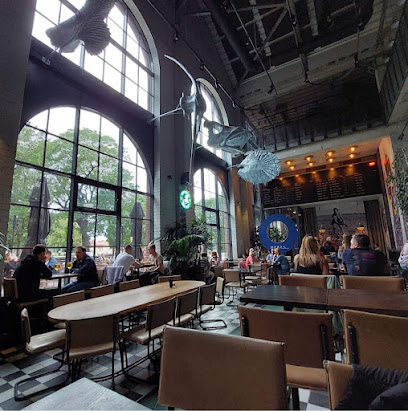
Kavinė Klaipėdos Senamiestis
Discover authentic Lithuanian cuisine at Kavinė Klaipėdos Senamiestis - where tradition meets taste in every dish.
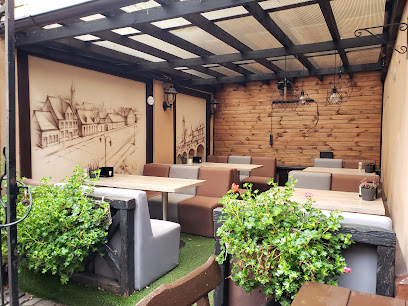
ETNO DVARAS
Discover authentic Lithuanian flavors at ETNO DVARAS in Klaipėda – where tradition meets taste in every dish.
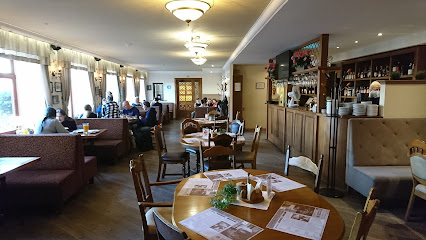
Friedricho pasažas
Discover the flavors of Lithuania at Friedricho Pasažas—where tradition meets modern culinary artistry in Klaipėda.
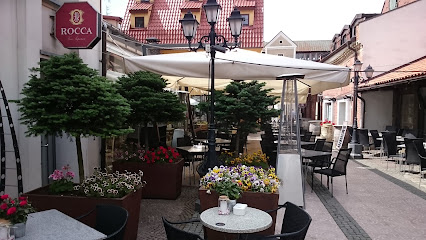
IQ Baras
Experience mouthwatering gourmet burgers in the heart of Klaipėda at IQ Baras - where flavor meets comfort.
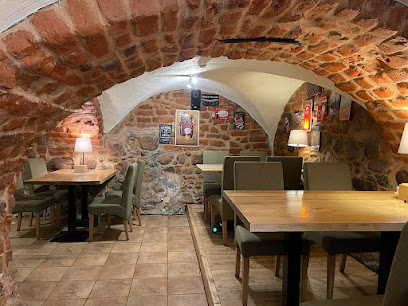
Senoji Hansa
Discover authentic Lithuanian flavors at Senoji Hansa in Klaipėda—where tradition meets taste in a cozy atmosphere.
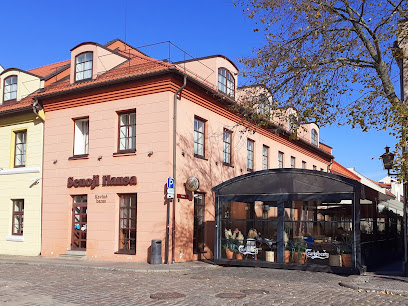
Viskas lietuviška
Experience authentic Lithuanian cuisine in Klaipėda at Viskas lietuviška – where tradition meets taste.
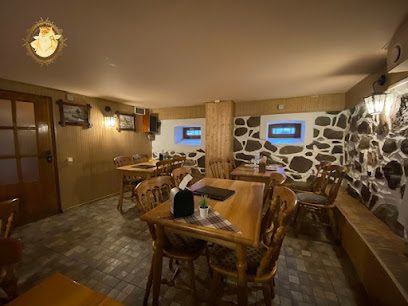
Meridian
Discover exquisite dining at Meridian in Klaipėda - where fresh local flavors meet breathtaking river views for an unforgettable experience.
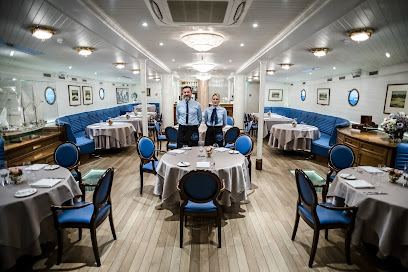
monai
Discover exquisite Lithuanian cuisine at Monai in Klaipėda – where local ingredients meet innovative cooking.
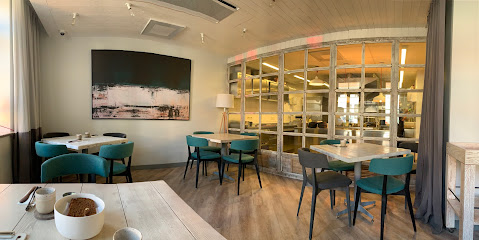
Katpėdėlė
Experience authentic Lithuanian cuisine at Katpėdėlė in Klaipėda—where tradition meets taste in a lively bar atmosphere.

Momo Grill
Experience exquisite grilled cuisine at Momo Grill in Klaipeda - where every meal is a celebration of flavor and quality.
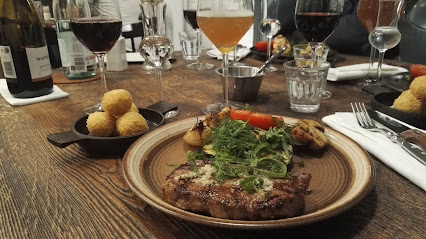
Gaisrinė | Restobaras
Discover Gaisrinė in Klaipėda: A culinary gem blending traditional flavors with modern flair for an unforgettable dining experience.
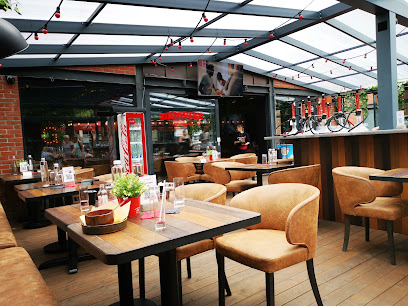
DOCK craft beer and burgers
Discover the ultimate dining experience at DOCK craft beer and burgers in Klaipėda - where gourmet burgers meet local craft brews.
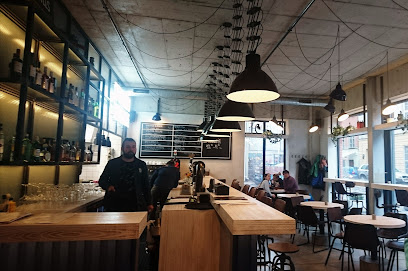
Ridikai
Savor traditional Lithuanian cuisine at Ridikai in Klaipėda - a culinary gem offering authentic flavors in a warm atmosphere.
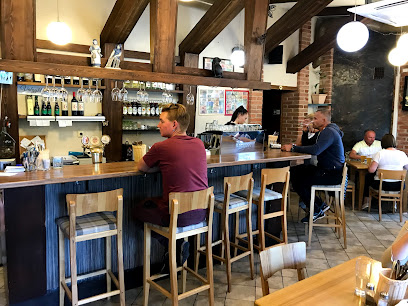
Markets, malls and hidden boutiques
Akropolis Klaipėda
Experience the best of shopping, dining, and entertainment at Akropolis Klaipėda, the ultimate destination for tourists seeking a vibrant retail experience.
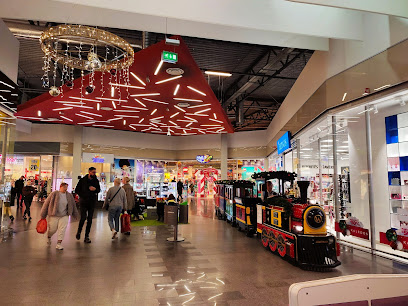
Maxima
Discover a wide selection of groceries and local delicacies at Maxima, Klaipėda's largest grocery store, perfect for tourists and locals alike.
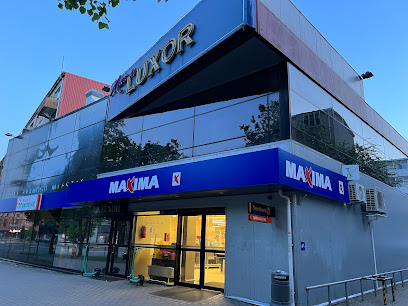
Studlendas
Explore the bustling Studlendas Shopping Mall in Klaipėda, where shopping meets culture, dining, and entertainment in a vibrant atmosphere.
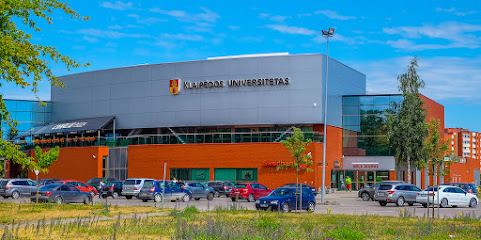
Senasis turgus
Discover the vibrant energy and local flavors of Senasis Turgus, Klaipėda's cherished market filled with fresh produce and unique crafts.
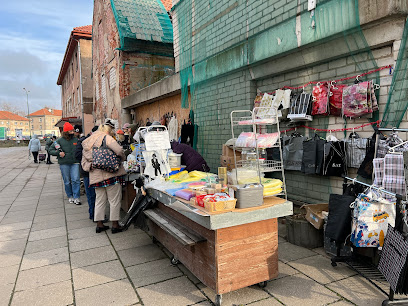
FLORIKA, UAB
Discover the enchanting world of Florika in Klaipėda, where stunning floral designs meet exceptional service for every occasion.
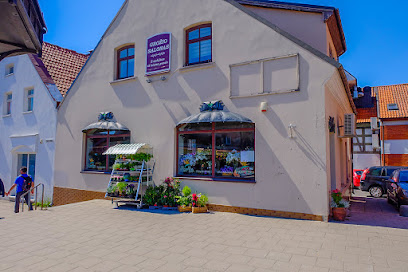
Norfa XL, prekybos centras, Norfos mazmena
Norfa XL in Klaipėda: A vibrant grocery store offering local delicacies, fresh produce, and everyday essentials for tourists exploring Lithuania.

Gero alaus parduotuvė KLAIPĖDA | Kūlių vartų
Experience the best of Klaipeda's craft beer scene at Gero alaus parduotuvė, where passion meets flavor in every bottle.
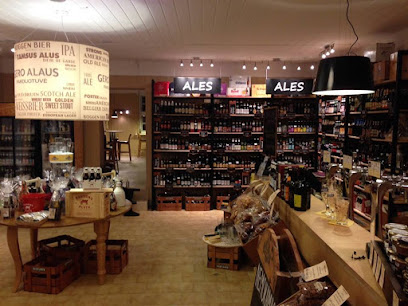
HERKAUS GALERIJA
Discover the vibrant shopping experience at Herkaus Galerija in Klaipeda, where local charm meets modern retail.
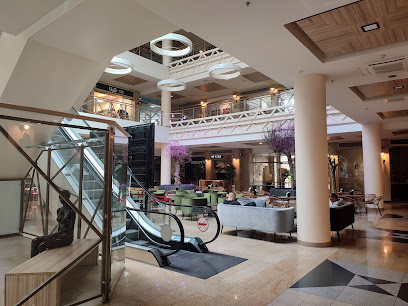
Čia Market
Explore the vibrant Čia Market in Klaipėda - your gateway to local flavors, unique crafts, and a taste of Lithuanian culture.
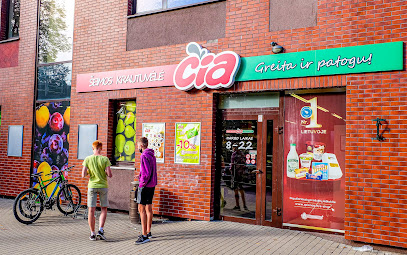
Tomo dzinsai, parduotuve, Eltima
Explore Tomo dzinsai, Klaipėda's premier clothing store, offering a stylish selection of apparel and unique local designs to elevate your wardrobe.
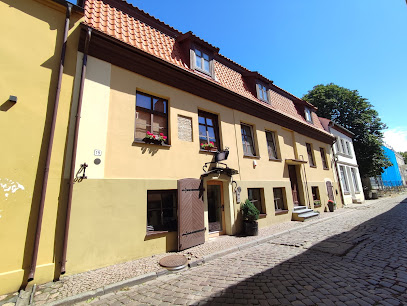
Klaipėdos turizmo informacijos centras
Explore Klaipėda like a local at the Klaipėdos Turizmo Informacijos Centras, your ultimate resource for travel information and unique souvenirs.
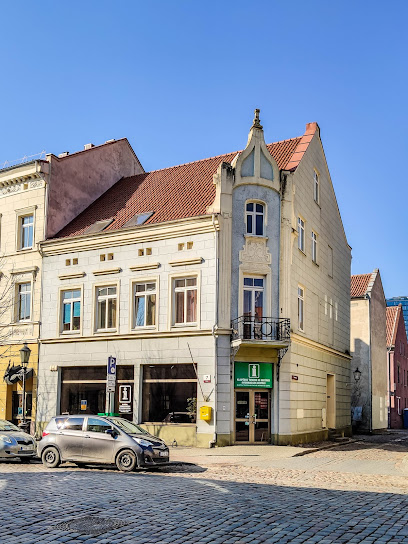
Amber Queen
Discover the beauty of amber jewelry at Amber Queen in Klaipėda, where tradition meets elegance in every unique piece.

Bikko.lt dviračiai + OUTLET Klaipėdoje
Discover the best bicycle store in Klaipėda, offering a wide range of bikes and accessories for all cycling enthusiasts.
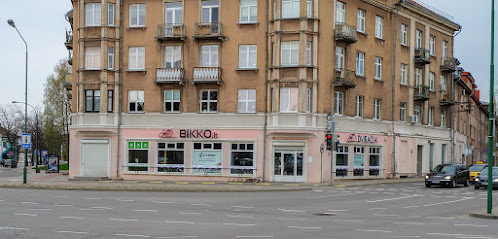
Lalene - desertų namai. Gražiausioje Klaipėdos vietoje!
Experience the sweetness of Lalene, where delectable desserts meet the charm of Klaipeda's vibrant culture.
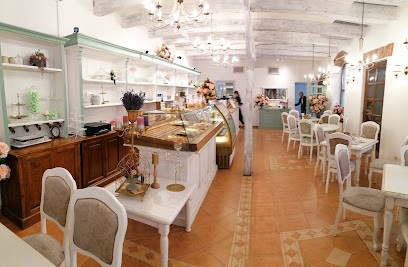
LDžinsai
Discover unique fashion at LDžinsai, a premier clothing store in Klaipėda offering stylish garments for every taste.
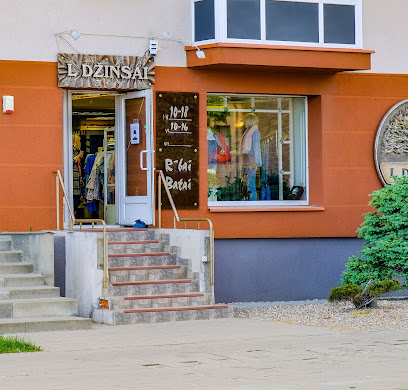
Essential bars & hidden hideouts
Švyturys Bhouse
Discover the unique flavors of Lithuania at Švyturys Bhouse, a premier gastropub in Klaipėda offering a delightful culinary experience.
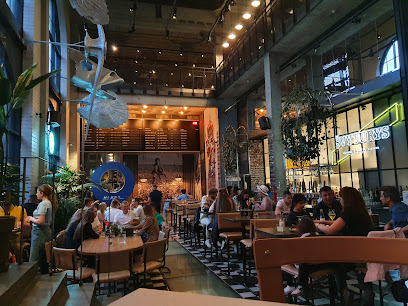
Senoji Hansa
Discover authentic Lithuanian cuisine at Senoji Hansa, a charming bar and restaurant in the heart of Klaipeda, offering a delightful culinary experience.
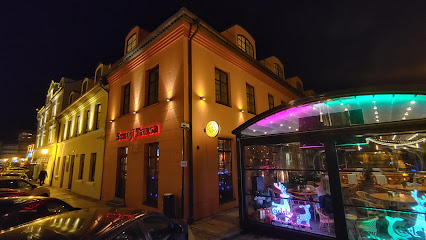
Faksas
Discover the lively atmosphere and diverse drink selection at Faksas, one of Klaipėda's favorite bars for nightlife and socializing.
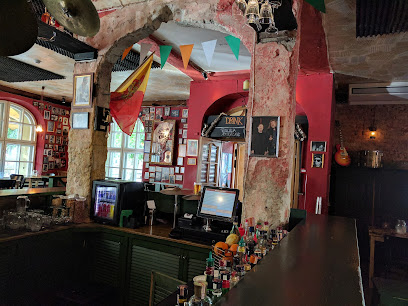
DOCK craft beer and burgers
Experience the best craft beer and gourmet burgers at DOCK, where flavor meets fun in Klaipėda's vibrant dining scene.
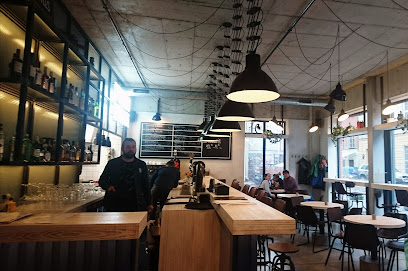
Pica Pub
Discover the lively atmosphere and delicious offerings at Pica Pub, a must-visit bar in Klaipėda, Lithuania.
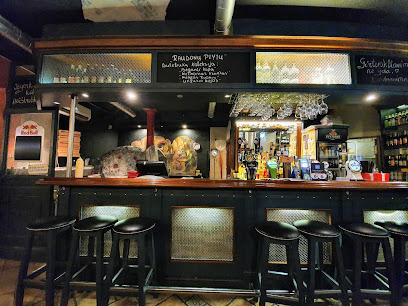
Tabu Restobar
Discover the vibrant nightlife and delicious culinary offerings at Tabu Restobar in Klaipėda, where every visit promises a memorable experience.
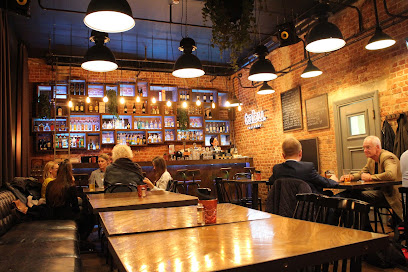
Herkus Kantas
Experience the vibrant nightlife of Klaipėda at Herkus Kantas, where live music and local drinks create unforgettable moments.
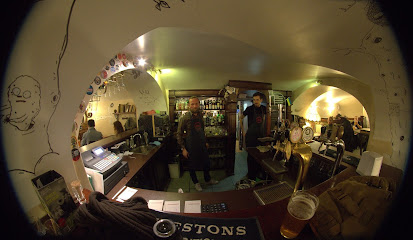
Rory pub Klaipėda
Discover the vibrant atmosphere of Rory Pub in Klaipėda, a perfect blend of local charm and lively entertainment.
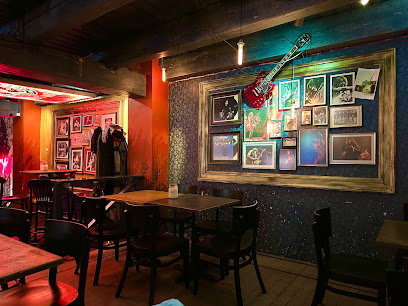
Sky 21 Terrace
Sky 21 Terrace in Klaipėda offers a unique blend of stunning views, delicious meals, and vibrant entertainment, making it a must-visit for tourists.
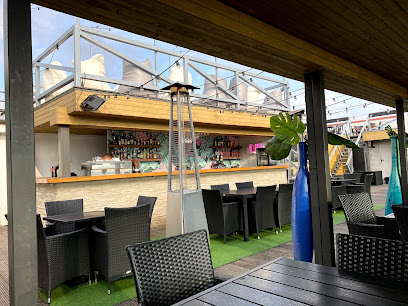
Karma bar Klaipeda
Discover the vibrant atmosphere of Karma Bar Klaipeda, where exquisite hookah blends and delightful drinks come together in a stylish setting.
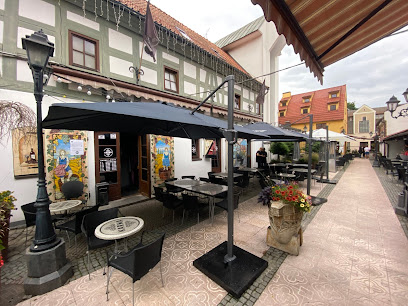
Achtung Baby
Discover the enchanting Achtung Baby, a wine bar and restaurant in Klaipėda, where exquisite wines meet delightful local cuisine.
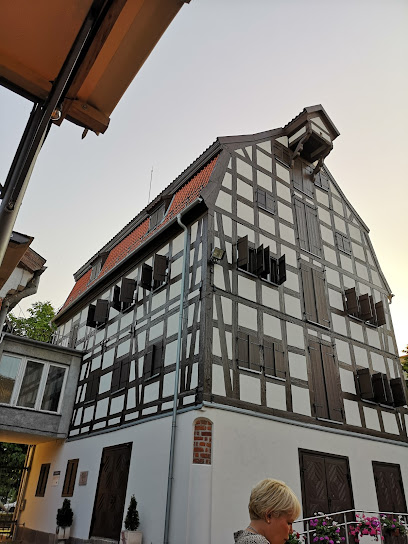
Cocktail Bar KISS
Discover the vibrant nightlife of Klaipėda at Cocktail Bar KISS, where expertly crafted cocktails and a lively atmosphere await you.
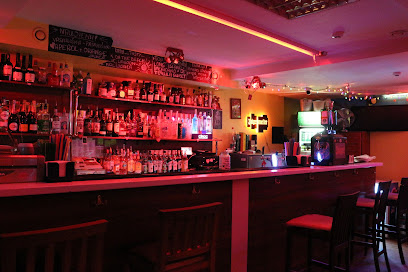
Little Havana
Experience the lively spirit of Cuba at Little Havana in Klaipeda, where vibrant music, delicious cocktails, and a festive atmosphere await.
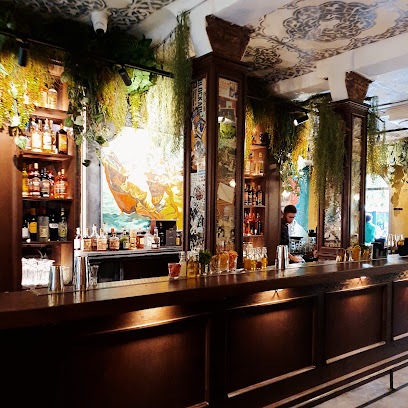
EscoBar
Experience the vibrant nightlife at EscoBar in Klaipėda, where expertly crafted cocktails meet an electric atmosphere, perfect for socializing and entertainment.
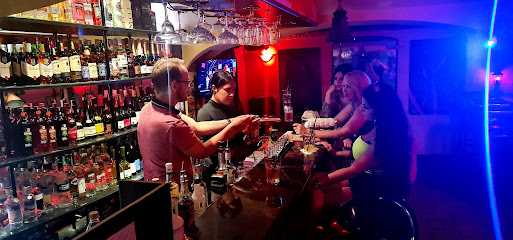
Beer pub
Experience the lively spirit of Klaipėda at this beer pub, serving local brews and delicious fare in a cozy atmosphere.
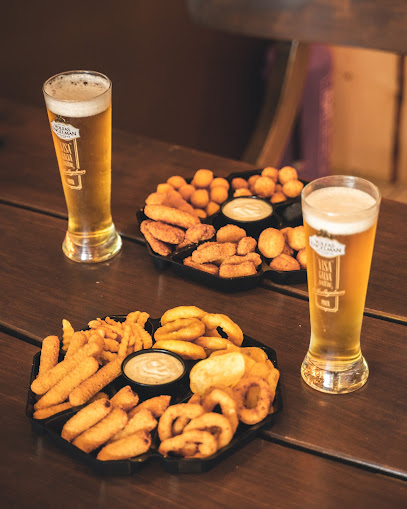
Local Phrases
-
- HelloLabas
[lah-bahs] - GoodbyeViso gero
[vee-soh geh-roh] - YesTaip
[taip] - NoNe
[neh] - Please/You're welcomePrašau
[prah-sau] - Thank youAčiū
[ah-chyoo] - Excuse me/SorryAtsiprašau
[aht-see-prah-sau] - How are you?Kaip gyveni?
[kaip gee-veh-nee] - Fine. And you?Gerai. O tu?
[geh-rye. oh too] - Do you speak English?Ar kalbate anglų kalba?
[ahr kahl-bah-teh ahng-loo kahl-bah] - I don't understandAš nesuprantu
[ahsh neh-soo-prahn-too]
- HelloLabas
-
- I'd like to see the menu, pleaseNorėčiau pamatyti meniu, prašau
[noh-reh-chyow pah-mah-tee-tee meh-nyoo, prah-sau] - I don't eat meatAš nevalgau mėsos
[ahsh neh-vahl-gow meh-sohs] - Cheers!Į sveikatą!
[ee svehy-kah-tah] - I would like to pay, pleaseNorėčiau sumokėti, prašau
[noh-reh-chyow soo-moh-keh-tee, prah-sau]
- I'd like to see the menu, pleaseNorėčiau pamatyti meniu, prašau
-
- Help!Pagalba!
[pah-gahl-bah] - Go away!Išeik!
[ee-shehk] - Call the Police!Paskambinkite policijai!
[pahs-kahm-been-kee-teh poh-lee-tsee-yahy] - Call a doctor!Paskambinkite gydytojui!
[pahs-kahm-been-kee-teh gee-dih-toh-yoo-ee] - I'm lostAš pasiklydau
[ahsh pah-see-kloo-dah-oo] - I'm illAš sergu
[ahsh sehr-goo]
- Help!Pagalba!
-
- I'd like to buy...Aš norėčiau nusipirkti...
[ahsh noh-reh-chyow noo-sih-peerk-tee] - I'm just lookingAš tik žiūriu
[ahsh teek zhyoo-ree-oo] - How much is it?Kiek tai kainuoja?
[kyek tah-ee kahy-noo-oh-yah] - That's too expensiveTai per brangu
[tai pehr brahn-goo] - Can you lower the price?Ar galite sumažinti kainą?
[ahr gah-lee-teh soo-mah-zihn-tee kahy-nah]
- I'd like to buy...Aš norėčiau nusipirkti...
-
- What time is it?Kiek valandų?
[kyek vah-lahn-doo] - It's one o'clockViena valanda
[vyeh-nah vah-lahn-dah] - Half past (10)Pusantros (dešimt)
[poo-sahn-trohs (deh-shimt)] - MorningRytas
[rih-tahs] - AfternoonPopietė
[poh-pyeh-teh] - EveningVakaras
[vah-kah-rahs] - YesterdayVakar
[vah-kahr] - TodayŠiandien
[shahn-dyehn] - TomorrowRytoj
[rih-toy] - 1Vienas
[vyeh-nahs] - 2Du
[doo] - 3Trys
[treese] - 4Keturi
[keh-too-ree] - 5Penki
[pehn-kee] - 6Šeši
[sheh-shee] - 7Septyni
[sehp-tee-nee] - 8Aštuoni
[ahs-too-oh-nee] - 9Devyni
[deh-vee-nee] - 10Dešimt
[deh-shimt]
- What time is it?Kiek valandų?
-
- Where's a/the...?Kur yra...?
[koor eer-ah] - What's the address?Koks adresas?
[kohks ah-dreh-sahs] - Can you show me (on the map)?Ar galite man parodyti (žemėlapyje)?
[ahr gah-lee-teh mahn pah-roh-dih-tee zheh-meh-lah-pyeh] - When's the next (bus)?Kada važiuoja kitas (autobusas)?
[kah-dah vah-zhoo-oh-yah kee-tahs ow-toh-boo-sahs] - A ticket (to ....)Bilietas (į ....)
[bee-lyeh-tahs ee]
- Where's a/the...?Kur yra...?
History of Klaipėda
-
Klaipėda, originally known as Memel, was founded in 1252 by the Teutonic Knights. The city's strategic location at the mouth of the Akmena-Danė River made it a vital port and fortress. The Teutonic Knights constructed Memelburg Castle to secure their hold in the region, marking the beginning of Klaipėda's historical journey.
-
In the 14th century, Klaipėda became a member of the Hanseatic League, an influential commercial and defensive confederation of merchant guilds and market towns in Northwestern and Central Europe. This membership bolstered Klaipėda's trade connections, contributing to its economic growth and cultural exchange.
-
The Treaty of Melno, signed in 1422, ended the Gollub War between the Teutonic Knights and the Kingdom of Poland and the Grand Duchy of Lithuania. This treaty established the borders between Prussia and Lithuania, with Klaipėda remaining under the control of the Teutonic Order, and later, the Duchy of Prussia.
-
Throughout the 17th and 18th centuries, Klaipėda experienced multiple shifts in sovereignty. The city was briefly occupied by Swedish forces during the Northern Wars. However, it predominantly remained under Prussian control, becoming an important Prussian port and trade center.
-
During the Napoleonic Wars, Klaipėda served as a temporary refuge for the Prussian royal family and government when Napoleon Bonaparte's forces overran Berlin. The city played a crucial role in the resistance against Napoleon, and King Frederick William III of Prussia issued his call to arms from Klaipėda in 1807.
-
The 19th century marked a period of significant growth and industrialization for Klaipėda. The construction of railways connecting Klaipėda with other major cities in the region enhanced its economic importance. The city's port was modernized, further establishing Klaipėda as a key trade hub in the Baltic region.
-
Following World War I, Klaipėda was placed under French administration as part of the Memel Territory. In 1923, Lithuanian forces staged the Klaipėda Revolt, successfully integrating the region into the Republic of Lithuania. This period saw Klaipėda flourish as Lithuania's main port and an important cultural center.
-
World War II brought significant turmoil to Klaipėda. The city was annexed by Nazi Germany in 1939 and heavily damaged during the war. Following the war, Klaipėda was incorporated into the Soviet Union. During the Soviet era, the city was rebuilt and developed into a major industrial center, with its port playing a critical role in the Soviet economy.
-
With the dissolution of the Soviet Union in 1990, Klaipėda became part of an independent Lithuania. The city has since undergone significant transformation, embracing its historical heritage while modernizing its infrastructure. Today, Klaipėda is a vibrant cultural and economic hub, attracting tourists with its rich history, beautiful architecture, and bustling port.
Klaipėda Essentials
-
Klaipėda is accessible via several modes of transportation. The nearest international airport is Palanga International Airport, located approximately 30 kilometers away. From the airport, you can take a bus, taxi, or rent a car to reach Klaipėda. Additionally, Klaipėda has a well-connected ferry port, with services from Germany, Sweden, and Denmark. If you are traveling by train, you can take a direct service from Vilnius, which takes about 4 hours. Buses from major Lithuanian cities also frequently service Klaipėda.
-
Klaipėda offers a variety of transportation options. The city is well-served by public buses, which are affordable and cover most areas. Taxis are available and can be hailed on the street or booked via mobile apps. For a more personal experience, consider renting a bicycle; Klaipėda is very bike-friendly with numerous cycling paths. Car rentals are also available for those looking to explore beyond the city. The Old Town area is best explored on foot due to its narrow streets and historical architecture.
-
The official currency in Lithuania is the Euro (EUR). Credit and debit cards are widely accepted in hotels, restaurants, and shops. ATMs are plentiful throughout the city, so withdrawing cash is convenient. However, it is advisable to carry some cash, especially when visiting smaller establishments and markets. Mobile payment options like Google Pay and Apple Pay are also increasingly accepted.
-
Klaipėda is generally a safe city for tourists, but it is wise to exercise standard precautions. Avoid walking alone at night in poorly lit areas and keep an eye on your belongings in crowded places. Although Klaipėda does not have specific high-crime neighborhoods targeting tourists, areas around the ferry port and train station can be hotspots for petty theft. Always stay vigilant and aware of your surroundings.
-
In case of an emergency, dial 112 for immediate assistance, which connects you to police, medical, and fire services. Klaipėda has several hospitals and clinics where you can receive medical care. It is highly recommended to have travel insurance that covers medical emergencies. Pharmacies are widely available and can provide over-the-counter medications for minor ailments.
-
Fashion: Do dress in layers, as the weather can be unpredictable. Wear comfortable walking shoes. Religion: Do respect local customs when visiting religious sites. Cover your head and shoulders when entering churches. Public Transport: Do validate your ticket upon boarding buses. Don't eat or drink on public transport. Greetings: Do greet people with a handshake and maintain eye contact. A simple 'Labas' (Hello) goes a long way. Eating & Drinking: Do try local dishes like 'Cepelinai' and fresh seafood. Don't refuse food or drink offerings; it is considered impolite.
-
To experience Klaipėda like a local, visit the local markets, especially the Central Market, where you can buy fresh produce and traditional Lithuanian goods. Engage with locals, who are generally friendly and willing to share stories about the city's history and culture. Don't miss visiting the Curonian Spit, a UNESCO World Heritage Site, which can be reached by a short ferry ride. For a unique experience, explore the city's old warehouses and maritime museum, which offer a glimpse into Klaipėda's rich maritime history.
Trending Landmark in Klaipėda
-
Lithuanian Sea Museum
-
Old Ferry Terminal, North Horn
-
Theatre Square
-
Melnrage Beach
-
Klaipėda Sculpture Park
-
Biržos tiltas
-
Klaipėda Castle
-
Battery Memel Nord - WWII bunker (Kukuliškių- Karklės baterija)
-
Museum of Clocks
-
Jonas Hill
-
Klaipedos universitetas, Botanikos sodas
-
Sąjūdžio parkas
-
Smiltynės Beach
-
The Castle Museum
-
Black Ghost of Klaipėda
Nearby Cities to Klaipėda
-
Things To Do in Liepaja
-
Things To Do in Šiauliai
-
Things To Do in Kuldiga
-
Things To Do in Marijampolė
-
Things To Do in Ventspils
-
Things To Do in Talsi
-
Things To Do in Kaunas
-
Things To Do in Panevėžys
-
Things To Do in Elblag
-
Things To Do in Jonava
-
Things To Do in Suwalki
-
Things To Do in Jurmala
-
Things To Do in Sopot
-
Things To Do in Olsztyn
-
Things To Do in Gdansk













